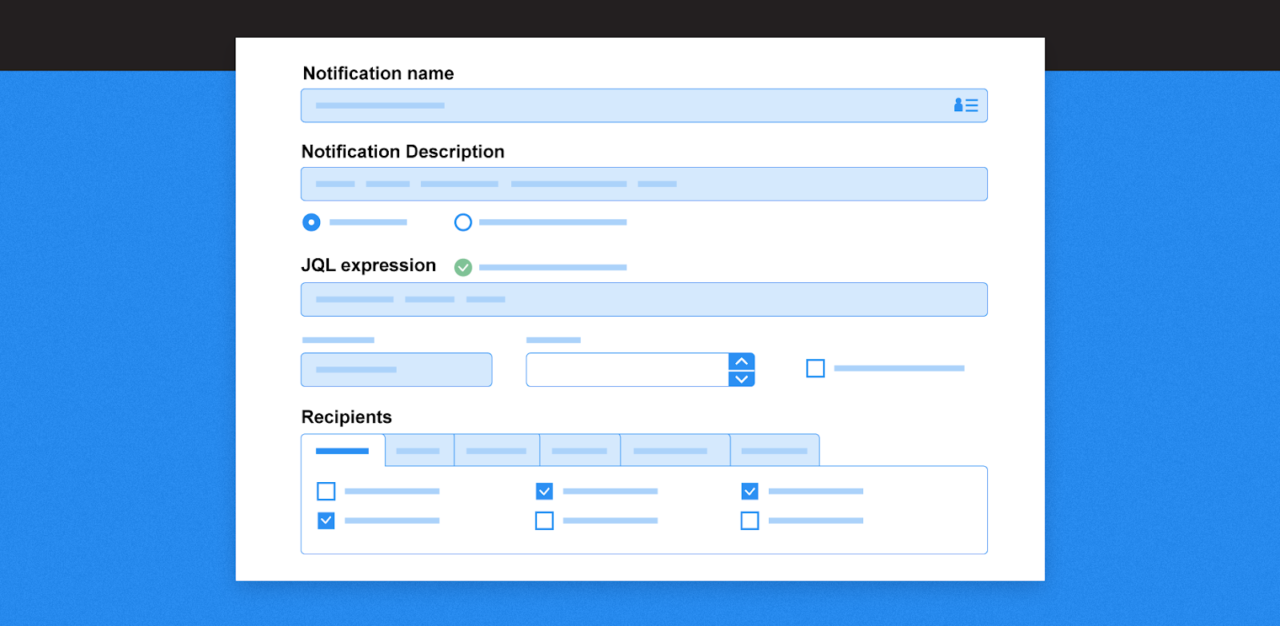

Note: Learn more about Jira by downloading the Intuitive Jira Guide for Users. While everyone else will be saved from having to deal with endless notifications. That means you can set certain teams to still autowatch issues, if that’s what they prefer. You can also do this on a project-by-project basis. Then they can decide whether to watch it or not. If you want to notify someone else about the issue, just mention them. You can then add yourself as a watcher, wherever relevant. Associate the notification scheme to all relevant projects.Add one notification to “All watchers” for all events.Create a new notification scheme – call it “Sparse Notifications” (or whatever you want).Click “Admin” then “Issues” then “Notification schemes” to access notification schemes.And if you want to opt out of a thread, you can just untick yourself. This means that you only get notifications on issues that have been deliberately flagged. That way, you’ll have to manually “opt in” to receive notifications about an issue. In my humble opinion, what’s far better than using Autowatch, is using a Watcher-only notification scheme. Use the watcher-only notification scheme in Jira To do this, go to “User Profile” then “Preferences” then “Autowatch”. You can also disable Autowatch just for your own account. This is where you can set whether you want Autowatch on or off. The “User Default Settings” window will now appear. Now click the “Edit default values” button. If you are an admin then go to “Settings” then “System” then “Default user preferences” then to the “User Default Settings” page. But you’ll need your Jira admin to complete the task. You can best disable Autowatch at the global level. I recommend a programme of sparse notifications and, for our own use, we build this in at the default level by disabling the Autowatch functionality.
JIRA NOTIFYR UPDATE
If you create, update or comment on an issue, you’ll get notifications about all updates to it (Comment: “Don’t include me in this.” Result: you’re watching the issue).Īnd if you do want updates you can manually opt in by watching the issue. Do not use the Autowatch functionality in JiraĪutowatch is a Jira feature which effectively means that showing any interest in an issue translates into getting notifications about it forever. Because the actual information is safely stored in Jira. One benefit of email notifications is that you can delete them without risk. So email notifications are definitely helpful when it comes to creating a situation where you don’t become overwhelmed in the first place.īut I’d recommend deleting them when you don’t need them anymore. Tracking email notifications is a good way to stay up to date with what’s happening in the system. Don’t be afraid to delete email notifications you don’t need If an issue doesn’t fall into either of those two buckets, there’s a good chance you don’t actually need to receive notifications about it. To stay up to date on issues which are important to what you’re doing (I’d recommend being conservative here).To receive updates on issues that require your input or feedback.Why would you want to get Jira notifications anyway?Ī good place to start is to ask why you would want to get notifications from Jira in the first place. Note: Read more about the worst (common) advice for Jira that is killing your productivity.

Managing those updates can turn into a job in itself, trust me I’ve been there. However, when it comes to setting up notifications, it might be tempting to get updates on everything that’s happening across the board. And it can help to save you a lot of time while getting work done fast. Jira is an immensely powerful task management tool. And I’ll also help you avoid common mistakes most people seem to make.
JIRA NOTIFYR HOW TO
You no longer need to search through your emails to check for a specific event in Jira.In this guide I will offer you some advice on how to set up your Jira notification scheme the better way. With the In-app & Desktop Notifications for Jira app, your email notifications will be a thing of the past.


 0 kommentar(er)
0 kommentar(er)
